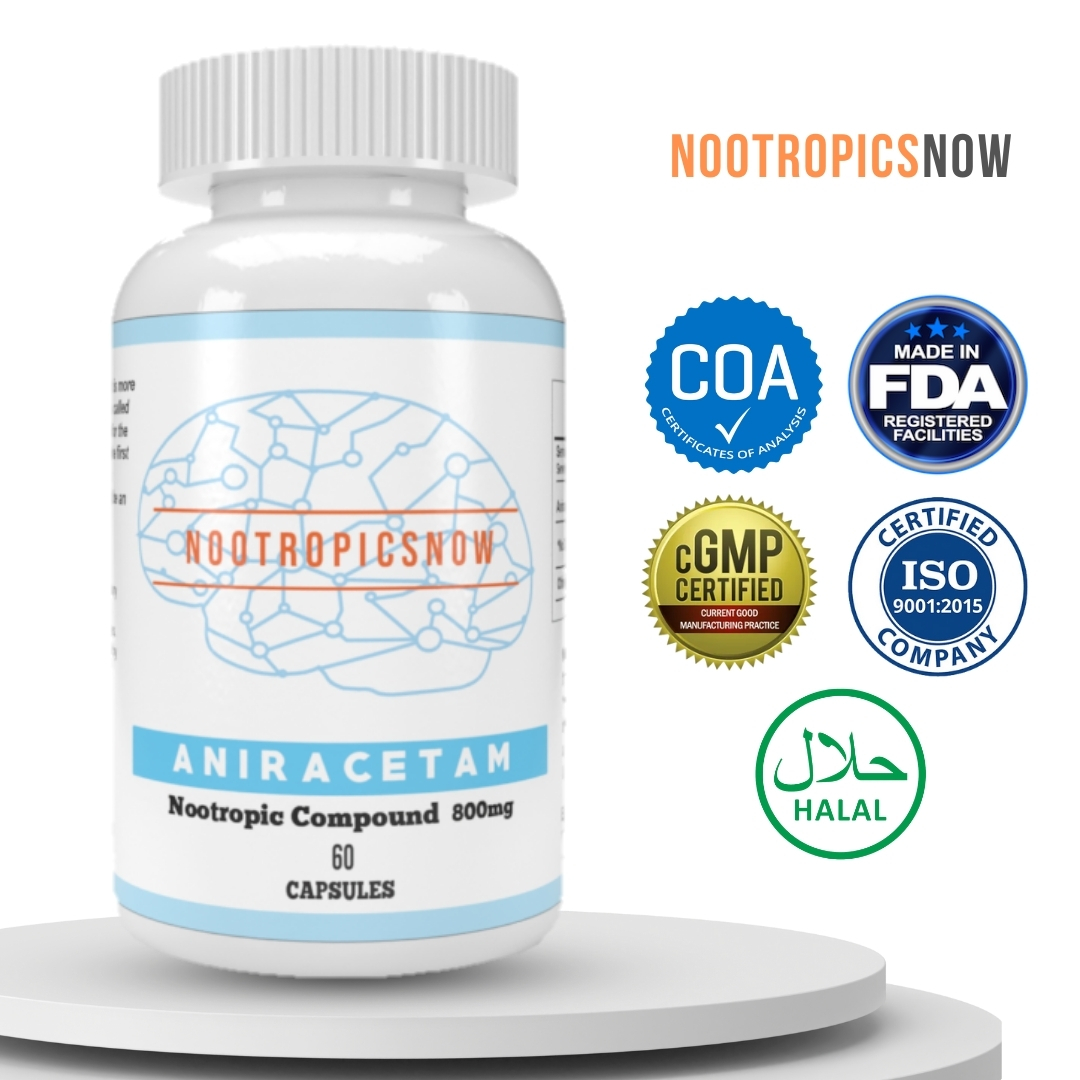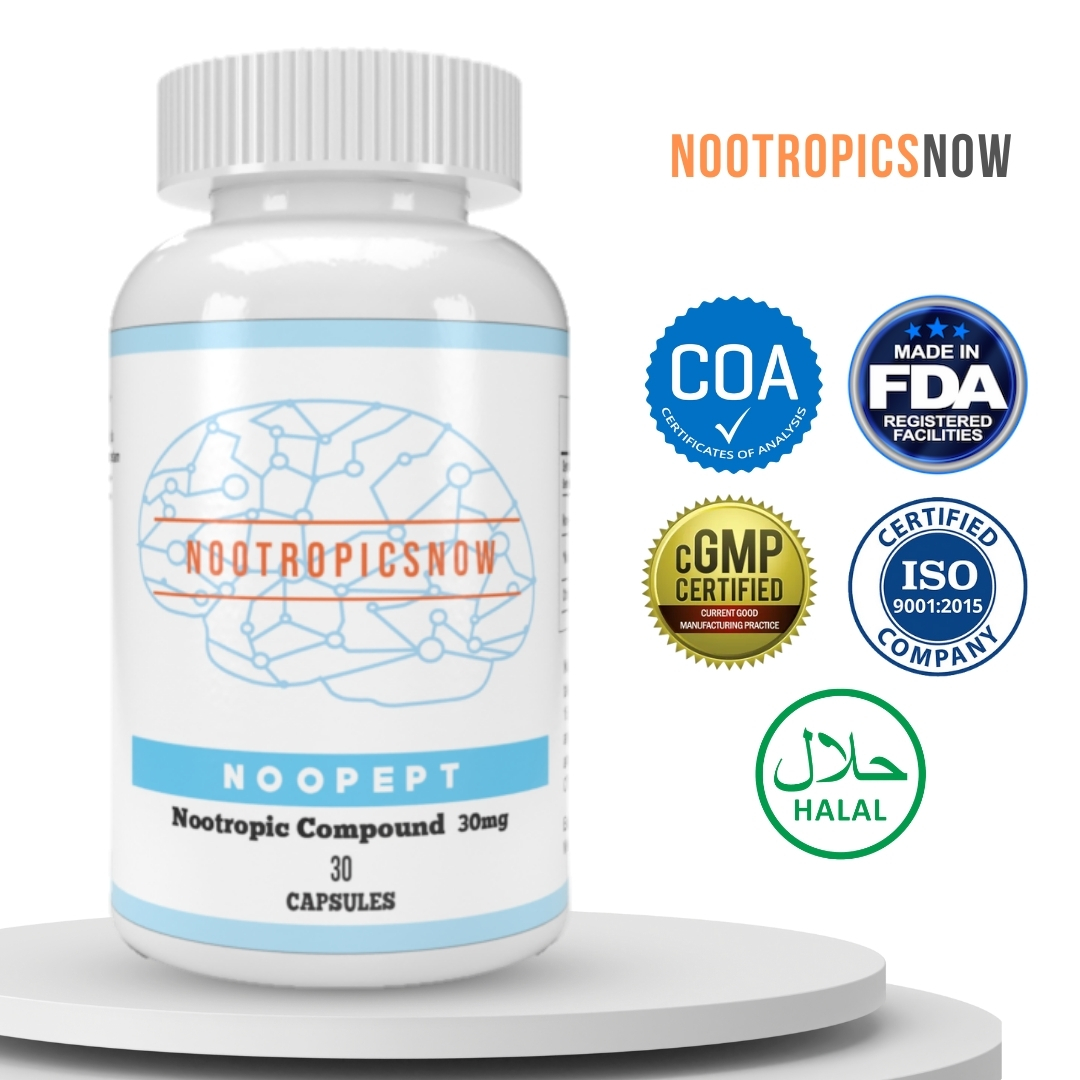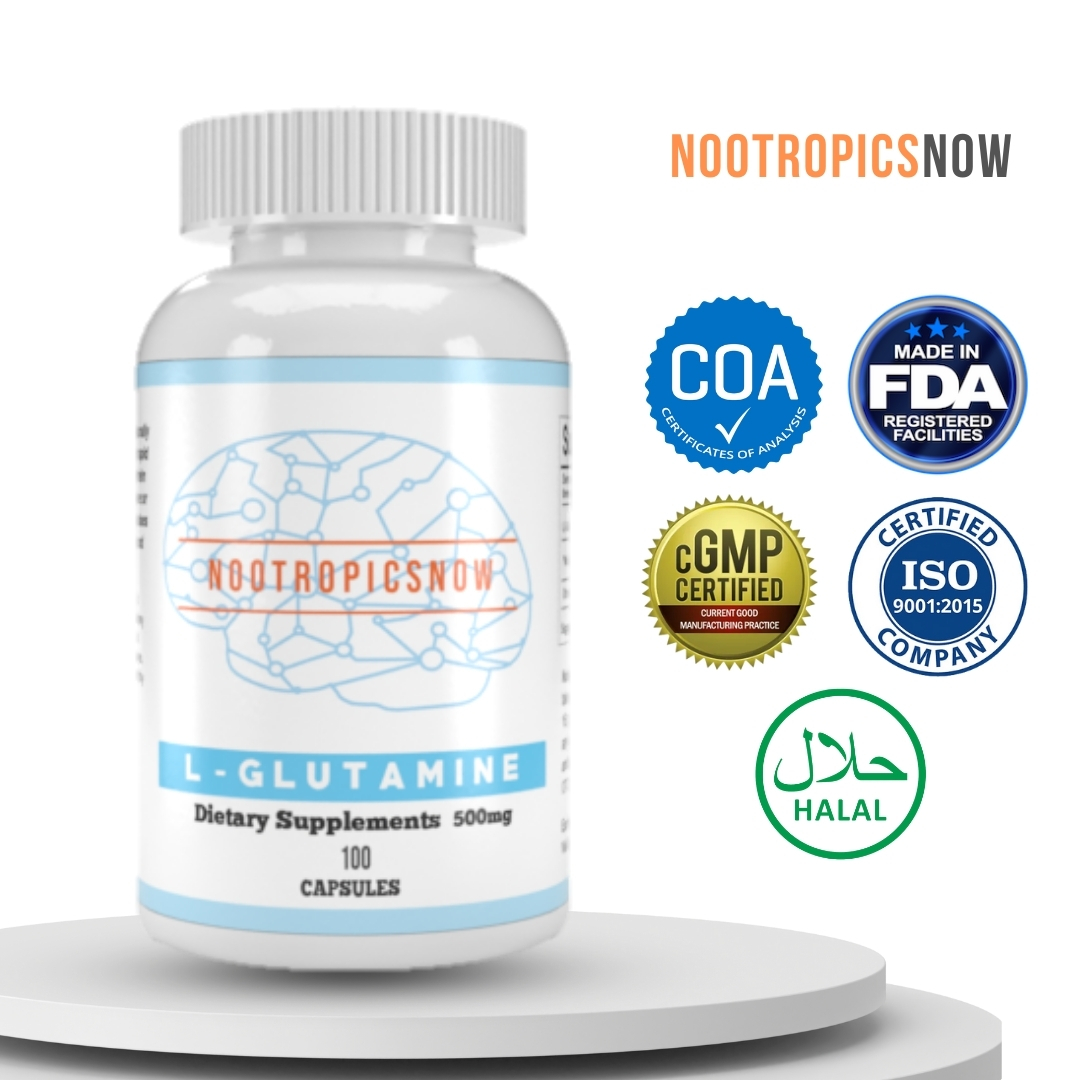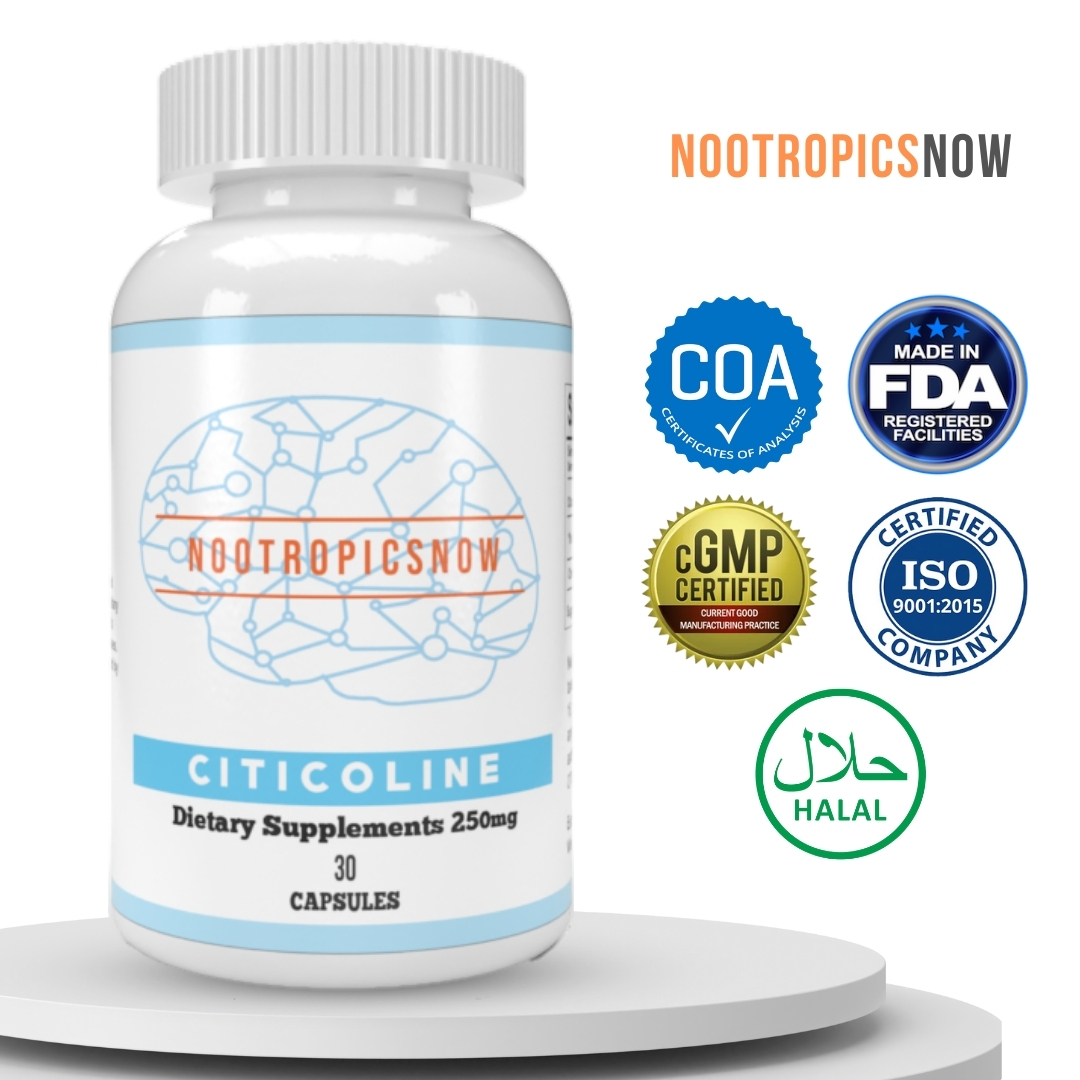Fasoracetam: Benefits, Uses, & Side Effects

Fasoracetam: A Comprehensive Overview
Fasoracetam is a synthetic nootropic belonging to the racetam family. Racetams are a class of compounds known for their potential cognitive-enhancing effects. This particular nootropic has garnered attention for its potential to improve memory, focus, and learning capabilities, as well as its anxiolytic and antidepressant properties. While research is ongoing, fasoracetam holds promise for various therapeutic applications. This comprehensive guide delves into fasoracetam’s mechanisms, benefits, potential side effects, and current research.
Understanding Fasoracetam
Fasoracetam is chemically known as 5-((tetrahydro-2-oxo-3-furanyl)methyl)-2-oxo-1-pyrrolidinecarboxamide. It’s a water-soluble compound structurally similar to other racetams like piracetam and aniracetam, but with a potentially more potent effect on specific neurotransmitter systems.

View Product
Originally synthesized in the late 1980s by Nippon Shinyaku, a Japanese pharmaceutical company, fasoracetam was initially investigated as a potential treatment for Alzheimer’s disease. However, its development was discontinued due to financial reasons. Despite this setback, research interest in fasoracetam has been revived in recent years due to its potential benefits for cognitive function and mental health. It is crucial to note that, as of now, regulatory agencies such as the FDA have not approved fasoracetam for human use.
Mechanisms of Action
Fasoracetam’s cognitive-enhancing effects are believed to stem from several interconnected mechanisms:
Potential Cognitive Benefits
Based on preclinical studies and anecdotal evidence, fasoracetam may offer the following cognitive benefits:
Anxiolytic and Mood-Boosting Properties
In addition to its cognitive benefits, fasoracetam has also been shown to possess anxiolytic (anxiety-reducing) and mood-boosting properties. These effects are likely related to its modulation of glutamate and GABA systems.
Research and Clinical Trials
While preclinical studies have shown promising results, the research on fasoracetam in humans is still limited. However, some clinical trials have investigated its potential therapeutic applications:
It’s essential to acknowledge that many studies are still in the preliminary stages, and rigorous, large-scale clinical trials are required to fully understand fasoracetam’s therapeutic potential and safety profile.
Dosage and Administration
The optimal dosage of fasoracetam is yet to be definitively established due to the limited human research. However, based on anecdotal evidence and preclinical studies, a typical dosage range is between 20mg and 100mg per day, divided into two or three doses. It’s generally recommended to start with a low dose and gradually increase it until the desired effects are achieved.
Fasoracetam is typically taken orally, either in powder or capsule form. It can be taken with or without food, although some users report better absorption when taken with a source of healthy fats.
Potential Side Effects and Safety Considerations
Fasoracetam is generally considered to be safe and well-tolerated, but some individuals may experience side effects. Common side effects include:
It’s important to note that the long-term safety of fasoracetam is not yet fully understood, as there is limited data from long-term human studies. Therefore, it’s recommended to use it cautiously and to monitor for any potential adverse effects. Individuals with pre-existing medical conditions or those taking other medications should consult with a healthcare professional before using fasoracetam.
Stacking Fasoracetam
Many nootropic users choose to “stack” fasoracetam with other cognitive enhancers to potentiate its effects. Common stacks include:

View Product
While stacking nootropics can potentially enhance their effects, it’s important to exercise caution and to start with low doses to assess tolerance and avoid potential side effects.
Legal Status and Availability
The legal status of fasoracetam varies depending on the country. In the United States, fasoracetam is not approved by the FDA for human use but is legal to purchase and possess as a research chemical. However, it cannot be marketed or sold as a dietary supplement or food additive. Other countries may have different regulations regarding fasoracetam, so it’s important to check the local laws before purchasing or using it.
Fasoracetam can be purchased online from various vendors that specialize in research chemicals and nootropics. It’s important to choose reputable vendors that provide high-quality, third-party tested products.
Future Directions
Fasoracetam continues to be a subject of interest in the field of nootropics and cognitive enhancement. Future research will likely focus on:
As the research evolves, fasoracetam may emerge as a valuable tool for enhancing cognitive function and treating various neurological and psychiatric disorders.
Conclusion
Fasoracetam is a promising nootropic with the potential to improve memory, focus, and learning, as well as to reduce anxiety and stabilize mood. While research is ongoing, preclinical studies and anecdotal evidence suggest that it may offer significant cognitive and therapeutic benefits. However, it’s important to use fasoracetam responsibly, to start with low doses, and to monitor for any potential side effects. Individuals with pre-existing medical conditions or those taking other medications should consult with a healthcare professional before using fasoracetam. Future research will further clarify its potential and safety profile, paving the way for its potential use in clinical settings.
`markdown
Delving Deeper into Fasoracetam’s Cognitive Benefits
Fasoracetam, a potent nootropic, offers a variety of potential cognitive enhancements, making it an appealing option for those seeking to improve their mental performance. Its unique mechanisms set it apart from other racetams, offering a distinct profile of benefits.
Memory Enhancement
One of the primary reasons individuals explore fasoracetam is its potential to enhance memory. By modulating cholinergic neurotransmission, fasoracetam can improve the formation and consolidation of memories. This effect is particularly noticeable in tasks requiring working memory and information recall. Furthermore, individuals report enhanced retention of learned material, which can be highly advantageous for students and professionals alike. The improved cholinergic function promotes better communication between neurons, facilitating more efficient memory processing and storage.
Focus and Concentration
Beyond memory, fasoracetam also demonstrates the capability to improve focus and concentration. Its influence on glutamate receptors helps balance excitatory neurotransmission, preventing overstimulation or mental fatigue. This balance allows for a sustained period of attention without the typical crash associated with stimulants. Many users report experiencing a “flow state,” where they can immerse themselves in tasks for extended periods without distraction. Consequently, it can be particularly beneficial for those involved in detail-oriented work or tasks requiring prolonged concentration.
Enhanced Learning Capacity
Fasoracetam’s effects extend to learning capacity as well. By promoting neural plasticity and improving communication between brain regions, it can make learning new information easier and more efficient. Its modulation of glutamate receptors supports synaptic strengthening, a key process in learning and memory. Users often find that they can grasp new concepts more quickly and retain information for longer periods. This enhanced learning capacity can be invaluable for those pursuing further education or acquiring new skills in their professional lives.
Mood Enhancement
While primarily recognized for its cognitive benefits, fasoracetam also exhibits mood-enhancing properties. Its influence on GABA receptors, the primary inhibitory neurotransmitter in the brain, can help reduce anxiety and promote a sense of calm. By modulating GABAergic transmission, fasoracetam can help balance neuronal excitation and inhibition, leading to a more stable and positive mood. Users often report feeling more relaxed and less stressed, which can contribute to overall cognitive performance. However, individual responses can vary, and some users may not experience significant mood enhancement.
Neuroprotective Properties
Emerging research suggests that fasoracetam may also possess neuroprotective properties. Its ability to modulate glutamate receptors can help protect neurons from excitotoxicity, a process that can lead to neuronal damage and cell death. Excitotoxicity is implicated in various neurodegenerative diseases, such as Alzheimer’s and Parkinson’s. By mitigating excitotoxic damage, fasoracetam may help preserve cognitive function and protect against age-related cognitive decline. However, further research is needed to fully elucidate its neuroprotective mechanisms and potential therapeutic applications.
Sourcing High-Quality Fasoracetam: A Guide to Reliable Vendors
Ensuring the quality and purity of fasoracetam is paramount to experiencing its benefits and minimizing potential risks. The nootropics market can be inconsistent, and adulterated or low-quality products are a concern. Therefore, it is essential to source fasoracetam from reputable vendors who prioritize quality and transparency.
Researching Vendor Reputation
Before purchasing fasoracetam, conduct thorough research on the vendor’s reputation. Look for online reviews and testimonials from other users. Check if the vendor has a history of positive feedback regarding product quality, customer service, and shipping reliability. Be wary of vendors with numerous negative reviews or complaints about product purity or mislabeling. Platforms like Reddit and other nootropic communities can provide valuable insights into vendor reputations.
Third-Party Testing and Certificates of Analysis
A reputable vendor should provide third-party testing results for their fasoracetam products. Third-party testing ensures that the product has been independently verified for purity, potency, and absence of contaminants. Look for vendors who provide Certificates of Analysis (COAs) from reputable laboratories. COAs should specify the exact concentration of fasoracetam in the product and confirm that it meets the stated purity levels. Avoid vendors who do not provide third-party testing results or whose COAs appear questionable.
Transparent Manufacturing Processes
Vendors who are transparent about their manufacturing processes are more likely to offer high-quality products. Look for vendors who disclose information about their sourcing practices, manufacturing facilities, and quality control procedures. Transparency indicates that the vendor is confident in the quality of their products and is willing to be accountable for their manufacturing practices.
Product Formulation and Packaging
Pay attention to the product formulation and packaging. Fasoracetam is typically available in powder or capsule form. Ensure that the product is properly sealed and protected from moisture and light. Check the ingredient list for any unnecessary additives or fillers. Opt for products with minimal ingredients and clear labeling. Vendors who invest in high-quality packaging and provide detailed product information are more likely to prioritize product quality.
Customer Support and Return Policies
Evaluate the vendor’s customer support and return policies. A reputable vendor should offer prompt and helpful customer service. Check if they have a responsive email or phone support system. Review their return policies to ensure that you can return the product if you are not satisfied with its quality. Vendors who stand behind their products and offer generous return policies are more likely to provide high-quality fasoracetam.
Red Flags to Watch Out For
Be aware of red flags that may indicate a low-quality vendor. These include:
By following these guidelines and conducting thorough research, you can minimize the risk of purchasing low-quality fasoracetam and ensure that you are obtaining a safe and effective product.
Optimal Dosage and Administration Strategies for Fasoracetam
Determining the optimal dosage and administration strategies for fasoracetam is crucial for maximizing its benefits and minimizing potential side effects. Because individual responses to fasoracetam can vary, it is essential to start with a low dose and gradually increase it while monitoring your body’s response.
Starting Dosage Recommendations
For individuals new to fasoracetam, a starting dosage of 10-20mg taken one to two times per day is generally recommended. This low starting dose allows you to assess your sensitivity to the nootropic and identify any potential adverse effects. It is best to take fasoracetam with water on an empty stomach for optimal absorption. However, if you experience gastrointestinal discomfort, you can take it with a small meal.
Gradual Dosage Adjustments
After assessing your tolerance to the starting dose, you can gradually increase the dosage by 5-10mg every few days until you reach the desired effects. The typical dosage range for fasoracetam is 20-50mg per day, divided into two or three doses. Some individuals may find that they require higher doses to achieve optimal cognitive benefits, while others may be more sensitive and require lower doses. It is important to listen to your body and adjust the dosage accordingly.
Administration Frequency
Fasoracetam has a relatively short half-life, so dividing the daily dosage into multiple administrations can help maintain consistent blood levels and cognitive effects throughout the day. Taking fasoracetam two or three times per day, spaced evenly apart, is generally recommended. For example, you could take one dose in the morning, one dose in the afternoon, and one dose in the evening.
Cycling and Tolerance Management
Prolonged use of fasoracetam can lead to tolerance, where the effects of the nootropic diminish over time. To prevent tolerance, it is advisable to cycle fasoracetam. Cycling involves taking fasoracetam for a period of time, followed by a break. A common cycling strategy is to take fasoracetam for 4-6 weeks, followed by a 2-4 week break. During the break, you can use other nootropics or cognitive-enhancing strategies to maintain cognitive function.
Stacking Considerations
Fasoracetam can be stacked with other nootropics to enhance its cognitive benefits. Popular stacks include fasoracetam with choline sources, such as Alpha GPC or CDP-choline, to improve cholinergic function and reduce the risk of headaches. It can also be stacked with other racetams, such as aniracetam or oxiracetam, to create a synergistic effect. However, it is important to research the potential interactions between fasoracetam and other nootropics before combining them.
Monitoring and Adjustments
Continuously monitor your cognitive performance and any side effects you experience while taking fasoracetam. Keep a journal to track your dosage, administration frequency, cognitive effects, and any adverse reactions. This will help you identify the optimal dosage and administration strategies for your individual needs. If you experience any significant side effects, reduce the dosage or discontinue use.
Considerations for Specific Populations
Individuals with certain medical conditions, such as liver or kidney problems, should exercise caution when taking fasoracetam. It is advisable to consult with a healthcare professional before using fasoracetam if you have any underlying health conditions or are taking any medications. Pregnant or breastfeeding women should avoid using fasoracetam due to the lack of safety data.
By following these dosage and administration strategies, you can maximize the cognitive benefits of fasoracetam while minimizing potential risks. Remember to start low, go slow, and listen to your body.
Potential Side Effects and Safety Precautions for Fasoracetam
While fasoracetam is generally well-tolerated, it is important to be aware of potential side effects and safety precautions before using it. Understanding these aspects can help you minimize risks and ensure a safe and positive experience.
Common Side Effects
The most commonly reported side effects of fasoracetam include:
Rare Side Effects
Less common but potentially more serious side effects include:
Interactions with Medications
Fasoracetam may interact with certain medications, including:
Contraindications
Fasoracetam is contraindicated in individuals with:
Precautions and Safety Measures
To minimize the risk of side effects and ensure a safe experience with fasoracetam, it is important to:
By being aware of potential side effects and following these safety precautions, you can minimize risks and ensure a more positive and beneficial experience with fasoracetam.
`






